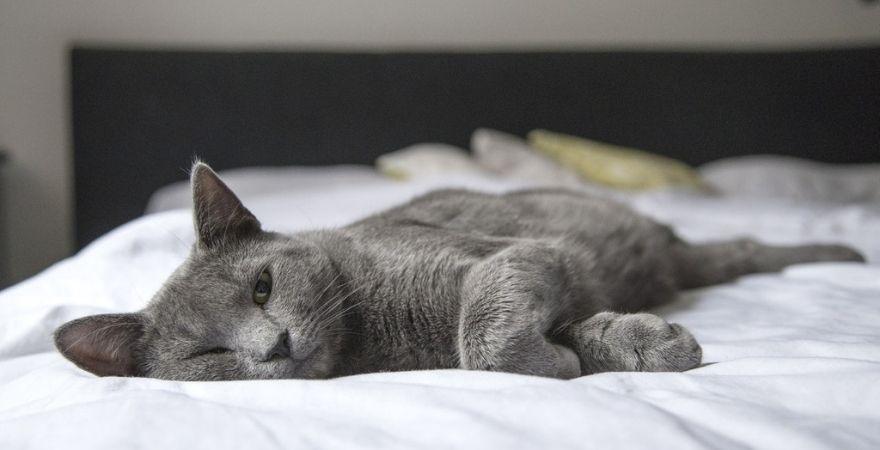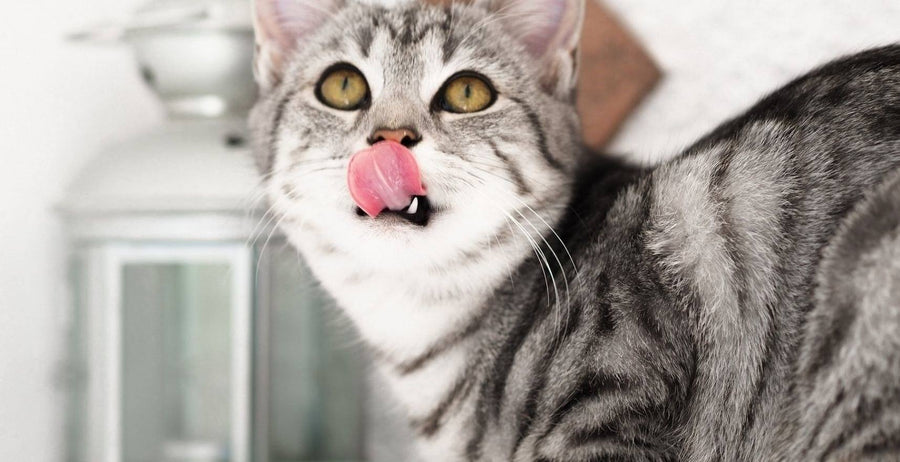When the vet prescribes your fur friend a medicated syrup or suspension, you may worry about how to give a cat liquid medication. This article provides useful hints and tips to take the stress out of the situation and make sure you and Kitty stay friends.
When you have to give a cat Liquid medicine
Want to know a secret about liquid medicines for cats?
OK, it’s this: Most of the veterinary medications licensed for use in cats are tasty or tasteless. For example, a common drug prescribed for arthritis in cats (meloxicam) is the equivalent of strawberries ‘n’ cream to people and most cats take it on food no problem.
Another example is the common dewormer, fenbendazole. When placed in the fridge and chilled, it is tasteless which makes adding it to some canned food a super-sneaky option.

Top Tips for Mixing Liquid Meds with Food
First, check with the vet that it’s OK to mix the med with food. Indeed, some drugs are best given with a little something to eat (eg meloxicam should not be given on an empty stomach) so giving with a treat is often beneficial.
However, the medication only works if the cat eats the food, so here are some top tips for success.
- Wait until the cat is hungry: Then Kitty is more likely to tuck in first and ask questions second.
- Offer a strongly flavored food: Now is the time to offer something fishy or canned food. You may even wish to warm the food slightly, so that it throws the cat of the scent of the medication.
- Give a small amount of food: Add the med to a small portion of food, and offer this and only this. Then Kitty is more likely to clear the bowl, rather than nibble around the edges.
If you try this and Kitty doesn’t eat, then you may need to put the med straight into her mouth. And here’s how...
Steps for Giving Your Cat Liquid Medicine
How to give a difficult cat liquid medicine? The answer is to prepare in advance, before involving the cat.
1) Gather everything together.
You will need:
- The medicine: Draw up the prescribed dose and have it ready to hand
- A table or flat surface to work on
- A large towel
- Optional but nice to have: An assistant to hold the cat
2) Get organized:
Work at a height, such as a table, that’s comfortable for you. Spread the towel over the surface and place the medicine within reac
3) Now for the cat
Place the cat on the towel. For a placid cat, the towel helps them feel more comfortable and secure, and they only need to sit on it. For a difficult cat, wrap the towel around them ‘burrito’ style so that only their head sticks out. This way, their paws are safely out of the way and won’t scratch you.
If you have the luxury of an assistant, have them restrain the cat through the towel. This leaves both your hands free to hold the cat’s head and give the med. But if you’re working solo, then simply hug the cat with their butt against your chest or tummy, and their head facing away from you. This stops the cat running off whilst allowing you to work.
4) Position the dosing syringe
Hold the dosing syringe in your dominant hand and use the tip to lift the cat’s lip, insert the tip behind one of their upper fangs. You may find it helps to place your non-dominant hand over the cat’s muzzle and tip their head back slightly. This causes the mouth to open enough to insert the syringe.
5) Give the medicine slowly
Drip the medicine in a little at a time, giving the cat a chance to swallow in between. Never squirt the medicine in so that it flood their mouth, as this risks the cat breathing it in and the medicine entering the lungs.
It can help to give a small amount, and then stroke the cat’s throat to encourage them to swallow. Then repeat the procedure until all the med is given. Take your time. It keeps Kitty calm and pays dividend in the end.
Good to Know
Some cats will salivate heavily or even froth at the mouth when given medicine. This is because they don’t like the taste, rather than they are having a bad reaction. If this happens, don’t worry, you haven’t harmed the cat.
Let them settle, and then try again. Next time, it may work better if get the medicine further back on the tongue where there are fewer taste receptors.
If you’re really struggling, again, don’t despair. Let the vet know. Most medications come in a whole array of formulations including liquids, powders, pastes, pills, or injections. It shouldn’t be too difficult to find an option that keeps everyone happy, including the cat.
Dr. Pippa Elliott, BVMS, MRCVS
Veterinary surgeon, LinkedinDr. Elliott graduated from the University of Glasgow, UK, with a Bachelor of Veterinary Medicine and Surgery. She has over three decades of experience working in companion animal practice and is the designated veterinarian for the Cats Protection rescue center, Harrow.




